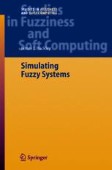Search
Search Results
-
Optimizing a Production Line
The simple production line considered in this chapter is shown in Fig. 20.1. This problem has been adapted from an example in [1]. This situation is...
-
Queuing I: One-Step Calculations
In this chapter we show situations where simulation can produce the same results as fuzzy calculations which employ the extension principle. We argue...
-
Simulation Programs
In this chapter we present some of the GPSS programs used in Chaps. 9–26. We had to omit many programs in order to keep this chapter. less that 20...
-
Summary and Conclusions
The first objective of this book is to explain how many systems naturally become fuzzy systems. The second objective is to show how regular (crisp)...
-
Method of Invariant Grids
The method of invariant grids is developed for a grid-based computation of invariant manifolds.
-
Mathematical Notation and Some Terminology
– The operator L from space W to space E: L : W → E
-

-
Invariance Equation in Differential Form
Definition of invariance in terms of motions and trajectories assumes, at least, existence and uniqueness theorems for solutions of the original...
-
Entropy, Quasiequilibrium, and Projectors Field
Projection operators Py contribute both to the invariance equation (3.2), and to the film extension of the dynamics (4.5). Limiting results, exact...
-
1 Introduction
The class of block-oriented nonlinear models includes complex models which are composed of linear dynamic systems and nonlinear static elements....
-
Results for Sr2RuO4
In this chapter, we focus on our results for the elementary excitations and Cooper pairing in strontium ruthenate (...
-
10. Main sychronization
It was made clear in Chapter 9 that the second order type-II loop operates either in saturated or in unsaturated mode. In this chapter, only the main...
-
4. Main synchronization
In this chapter the main synchronization of the first order PLL is discussed. At first, we perform the local stability analysis of the main...
-
8. Main synchronization
In the present chapter the main synchronization of the second order type-I loop is treated. At first, the local stability analysis is presented and...
-
Machine Shop I
The queuing system in this chapter is shown in Fig. 11.1. This application was adopted from a problem in ([1], p.594). We continue this problem in...
-
Inventory Control II
This chapter continues the inventory control problem studied in the previous chapter. The new system is shown in Fig. 17.1. We have added two things...
-
Project Network Model
The project network diagram is in Fig. 26.1. This problem is modelled after an example in [2]. The project consists of various jobs that must be...
-
Queuing II: No One-Step Calculations
In this chapter we will study the fuzzy system shown in Fig. 5.1 now reproduced as Fig. 9.1. This example was adapted from an example in [1]. The...
-
Nonlinear superposition formulae of integrable partial differential equations by the singular manifold method
We study by the singular manifold method a few 1+1-dimensional partial differential equations which possess N-soliton solutions for arbitrary N, i.e....
-
11. Third harmonic synchronization
In this chapter, a brief analysis of the synchronization at the third harmonic of the center VCO frequency is given. The relatively large width of...
